Cold calling is one of the best ways to get immediate customers for any business.
Instead of waiting around for referrals or inbound leads, you can pick up the phone and land a client within a day.
However, it’s much easier said than done.
Cold calling takes a master salesman to turn it into a lead machine.
Whether you have a list of phone numbers you blast daily or hop on the occasional discovery call, this article is for you.
You’re going to learn how to boost conversion rates of cold calls, make it less stressful, and ultimately make more money.
Let’s dive in!
Find the decision maker of the target company
You never want to cold call a random person in a target company.
This is often a mistake beginners make when getting into outbound sales.
They find any generic phone number to customer service or other departments and ring them.
Sure, you might be able to go through a train of forwarding and being put on hold to find the decision, but why not go straight to the top?
The first step is to determine who you need to speak with.
For example, if you offer marketing related services, you will need to find the VP of Marketing, CMO, a Marketing Director, or similar executive.
This speeds up the process, allowing you to generate more results and pump out increased amounts of quality phone calls.
I recommend using a database like LeadFerret.
It’s completely free unless you’d like to purchase extra points for downloading sheets of leads.
Otherwise you can use it perfectly fine with a little elbow grease.
Once you’ve signed up, it will direct you to the search page. Here you want to filter the options to find specific companies you’d like to pitch.
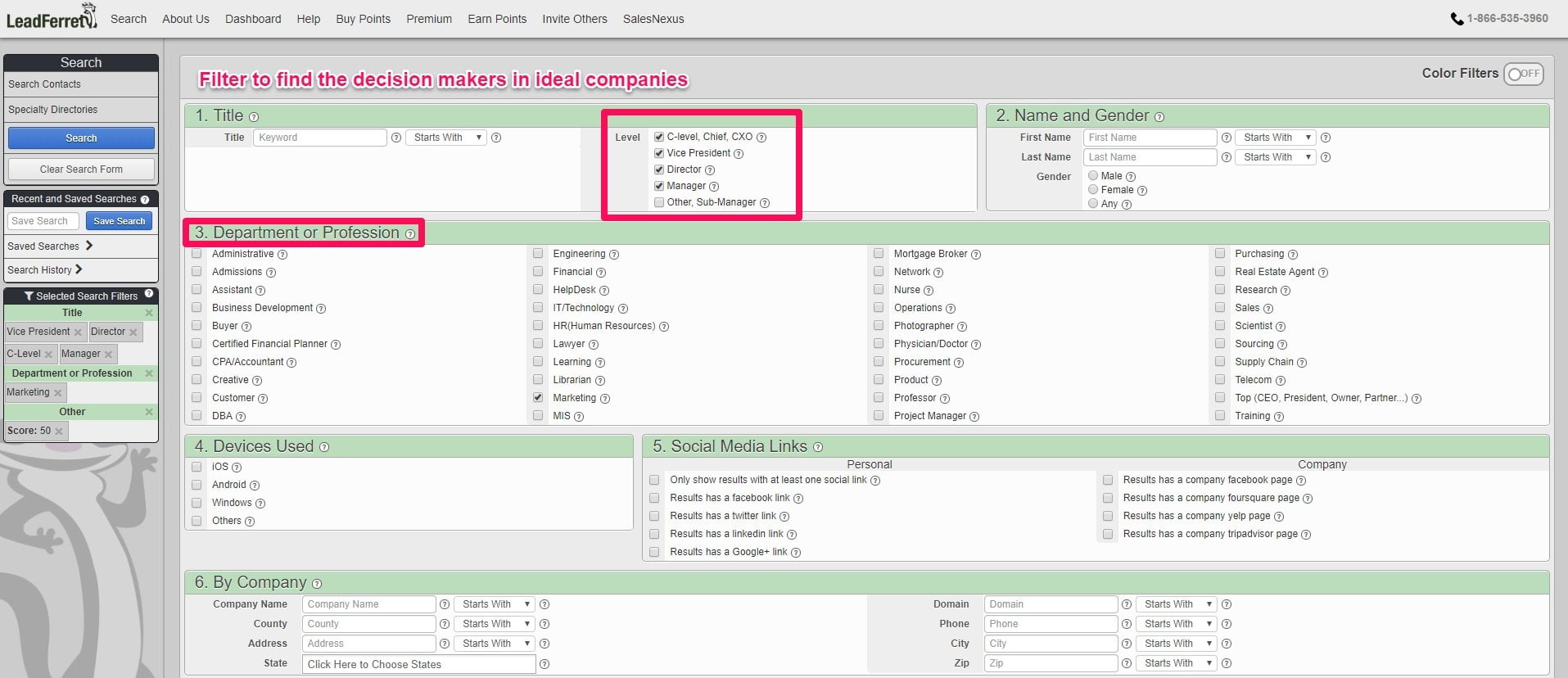
You can filter the results down to specific positions, departments, revenue sizes, amounts of employees, and more.
Use this to your advantage to find the exact buyers persona you’re targeting.
Once you’re satisfied, hit the blue “Search” button on the left sidebar.
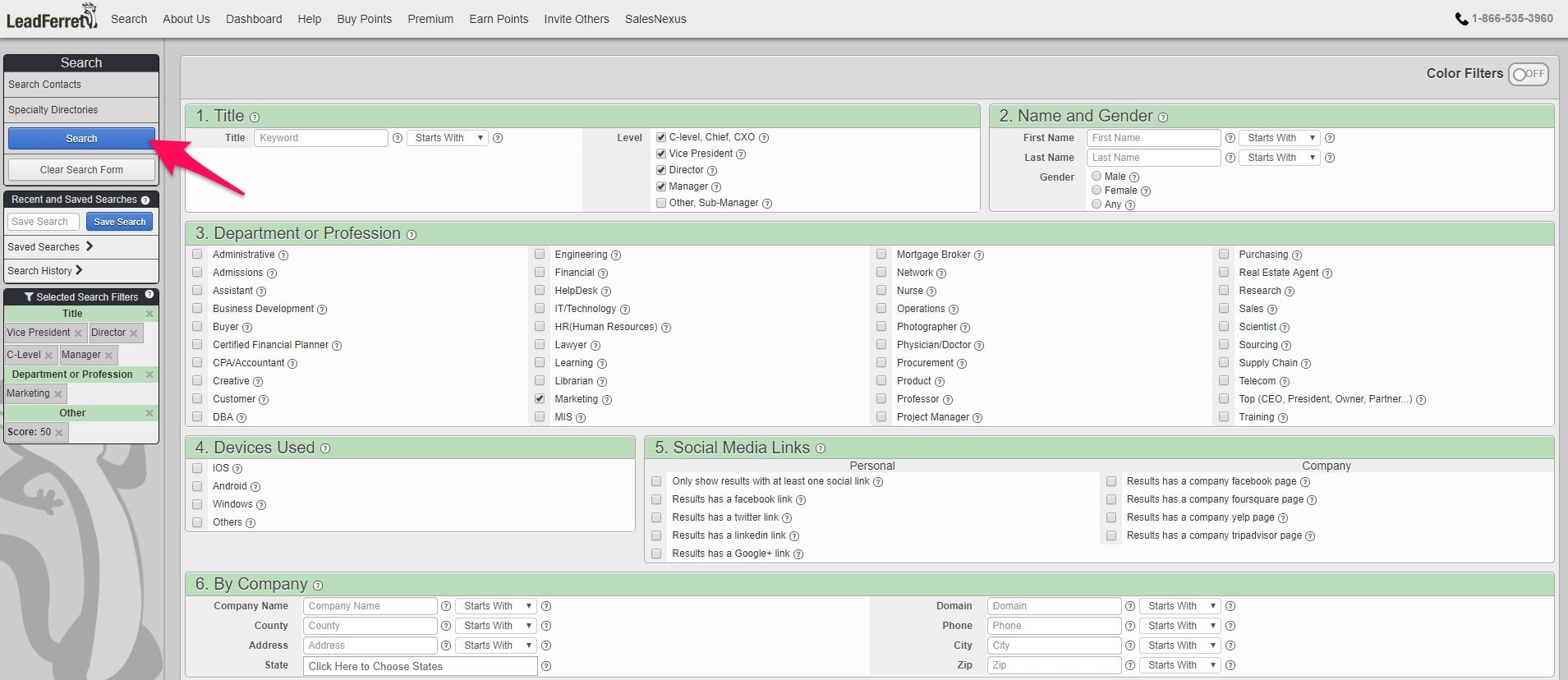
This will display a list of leads, and every piece of information about them that you’d want to know.
Click any row and it will open up a small menu like this:
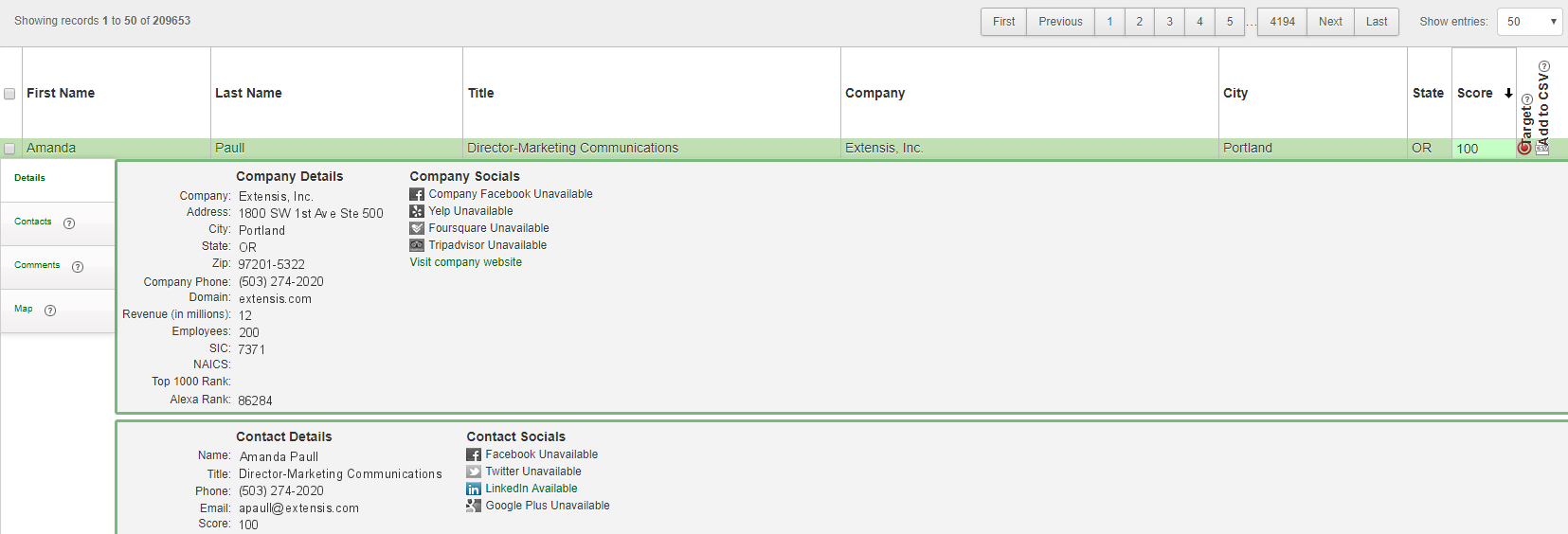
You have the options of manually typing out the phone number into a spreadsheet or clicking the checkbox next to their name. You can then download the chosen leads as a CSV file at the top of the page after.

Remember that you only have a certain amount of free points, so you will either need to manually organize lead information or purchase more points later.
Alternatively, LeadFerret will award you points for adding accurate information to their database.
Once you’ve made your hit list, you can move onto the next tip.
Calculate how many calls you need to do per day
A good salesman knows how much an average customer is worth, the time it takes to close them, and what their cold call conversion rate is.
Which by the way according to Marketo is approximately 0.90%.
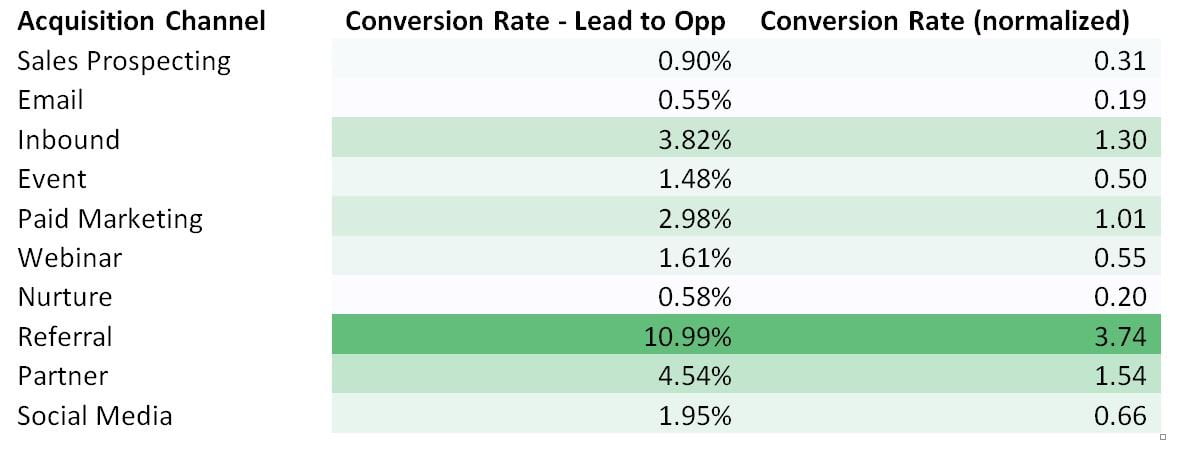
Measuring your cold calling campaigns like this will enable you to optimize processes along the way, increasing the amount of customers you close.
This is why it’s recommended to calculate how many cold calls you need to perform per day.
Let’s say that you have close three leads out of every 100 calls. If you wanted to get ten new clients every month, you would need to call approximately 100 leads per week.
Knowing these numbers helps you prospect, too.
Continuing with this example, you could scrape 100 leads from LeadFerret at the beginning of every week to have enough.
This brings me to my next tip.
Have a script in place that you can customize
You never want to go into a cold call unprepared. You should know what you’re going to say, how you’re going to say it, and directions the conversation can go.
Remember those game shows where contestants had to choose between doors one, two, and three but they didn’t know what was behind them?
That’s how you should look at cold calls.
Know the typical questions and concerns a lead may propose, and have an answer ready.
This, of course, requires you to have a good script.
My calls with leads typically only last for ten minutes or less.
I get straight to the point about how I found their company, what I offer, and why I believe we’re a good match.
I can quickly summarize my experience as a copywriter, the process of working with me, and neatly lay out the next steps to get working with each other.
There’s no room for awkward pauses or wondering how to continue. I take charge of the call and explain everything they need to know within minutes.
Here’s an example of a script you can use yourself:
Hi, am I speaking with {First name}?
Awesome! My name is {First and last name} from {Company name} and I found {Lead’s company} through {List, article, publication, etc}.
{Bring awareness to a problem you notice their business having and ask if their aware of it}.
{Explain what your company does and position the product or service as a solution}.
{End with a call to action for a free demo, trial period, etc}.
Yeah, it’s really as simple as that.
The same goes for cold email campaigns.
They should be straight to the point, respecting both you and the lead’s time.
Vice Presidents and executives in higher roles don’t have the time to sit on a 30 minute phone call, nor do they want to.
Trust me when I say that they will respect a sales person that’s straight forward, has a simple process, and doesn’t beat around the bush.
Which brings me to my next idea…
Take notes after every call
My cold calling process is so smooth and optimized for one big reason: taking notes after each call.
I would always ask myself questions like:
- What could I have done better?
- What questions could I have answered more precisely?
- What new questions or objections did I receive that I haven’t in the past?
- How can I respond to X question better next time?
Over time, you will find the chinks in your armor.
Perhaps you’re not very good at explaining the benefits of your service or you keep forgetting to mention something important.
Taking notes will help you gradually improve, increasing the success of each cold call in the future.
Eventually it gets to the point where calls are quick, effortless, and you feel little to no anxiety because you’ve optimized the hell out of the process 🙂
Have a specific call to action
Cold calls need to lead somewhere.
You’re not calling to gossip and talk about your day. Although that does happen sometimes! (And it’s perfectly okay)
What I mean is that you need to have a clear call to action at the end of a call.
This will depend on your exact business, but it might be for:
- A free demo or trail of your SaaS.
- A trial period to determine if you’d work well together.
- A detailed proposal.
- A sheet of rates, retainers, and other information before getting started.
- A physical meeting.
- Speaking with another decision maker.
- Etc.
Call at the right time
What’s the best time to cold call?
According to a study from PhoneBurner, it’s 10:00am, 11:00am, and 2:00pm.
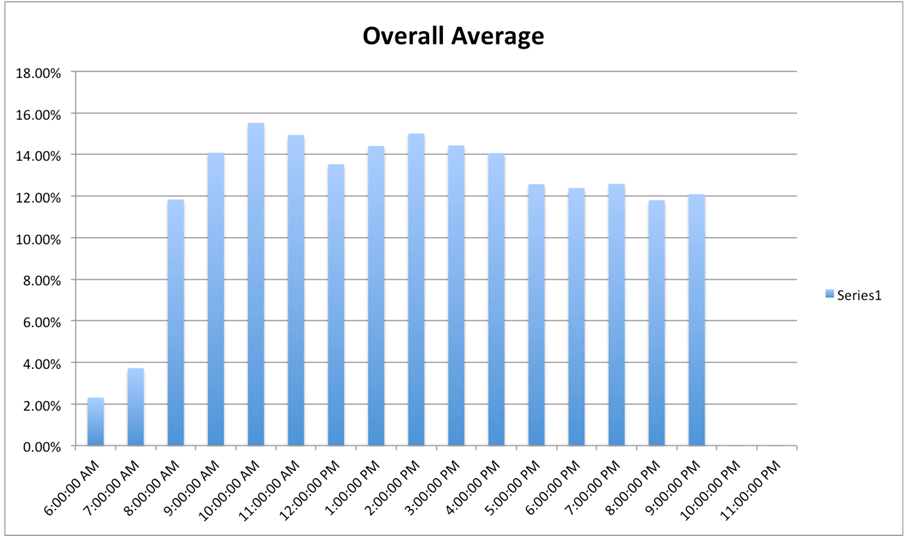
These numbers make sense, too.
If somebody gets in at the office at approximately 9:00am, they’re going to be settled and have coffee flowing through them by 10:00 to 11:00am.
Similarly, by 2:00pm they’ve finished lunch and come back from a nice break.
But, what are the best days to cold call?
InsightSquared found that Tuesday and Wednesday had the highest connection rates.

While it’s good to go off of proven data like this, nothing beats collecting your own analytics.
Begin tracking your phone calls to determine if you personally get a better connection or close rate at certain times.
You may find that the specific leads you’re reaching out to are easier to reach at different hours than what some studies like the above have concluded.
Explain the benefits of working with you
So, you offer Facebook and Google Ads management.
Cool.
What the heck does that mean for a lead?
Nothing!
That’s why you need to refine your pitch to talk about how leads will benefit from your service.
Continuing with the ad management example, you could say that:
- You will reduce ad spend.
- You will increase conversion rates of campaigns.
- You will drive more revenue and leads.
That’s what they want to hear.
Obviously you need a proven track record to make claims like this, so be honest about results you’ve produced for previous clients.
If you have any case studies you can share, they are excellent at converting leads who are on the fence.
Bottom line on cold calling
I hope you enjoyed these tips for cold calling. Here’s a quick recap of everything I touched on today:
- Use a lead database like LeadFerret or Zoominfo to find the precise decision makers in companies to cold call. Avoid calling customer service reps or low level positions.
- Have a script in place that answers common questions and takes control of the phone call.
- Take notes after every phone call about how you could improve the process.
- Have a call to action to lead the interaction somewhere once the phone call is over.
- Call on Tuesdays and Wednesday at 10:00am, 11:00am, or 2:00pm.














